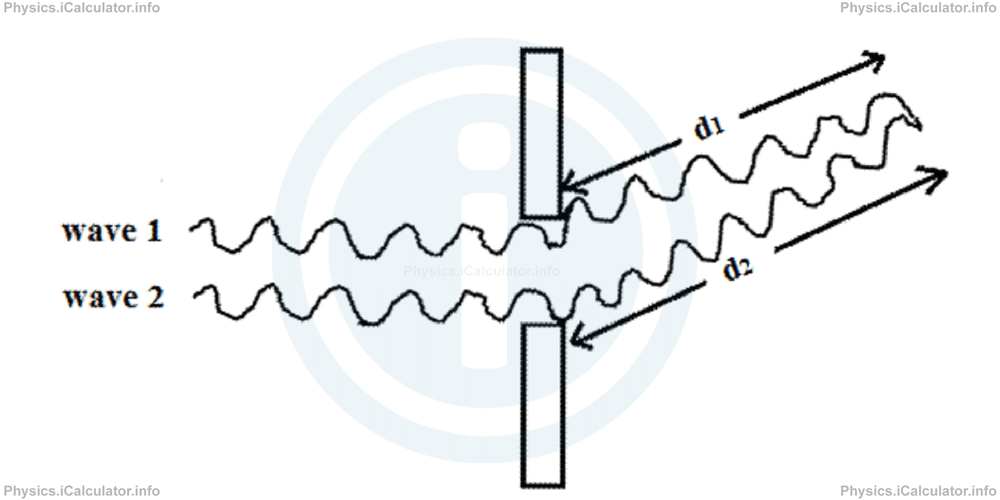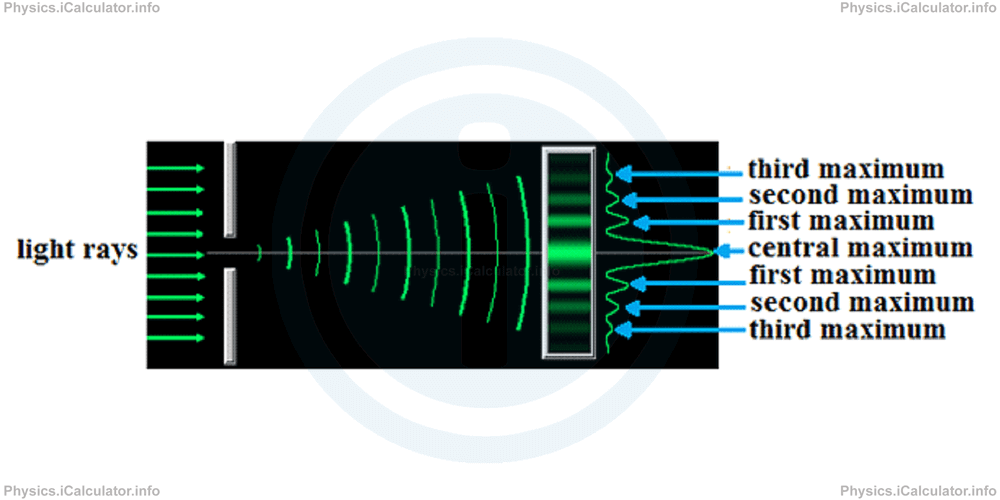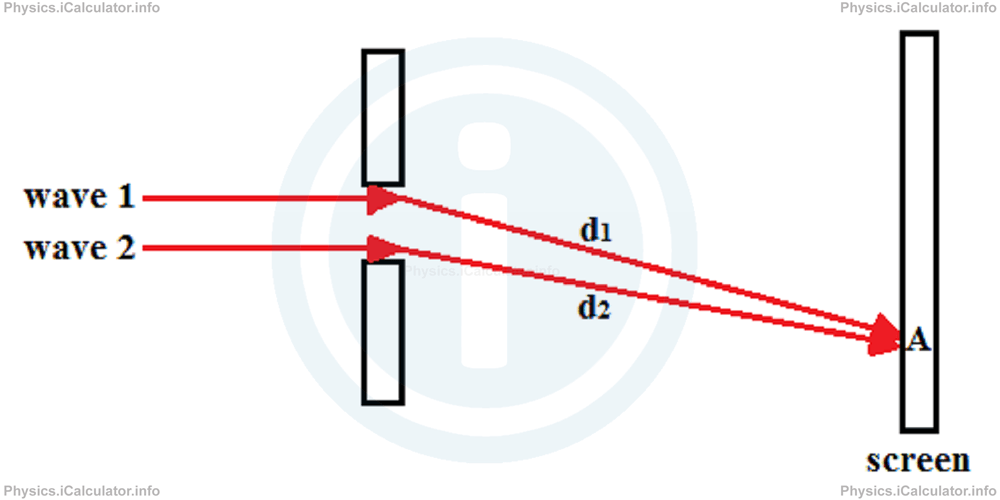Menu
Physics Lesson 11.4.3 - Conditions for the Interference
Please provide a rating, it takes seconds and helps us to keep this resource free for all to use
Welcome to our Physics lesson on Conditions for the Interference, this is the third lesson of our suite of physics lessons covering the topic of Interference of Waves, you can find links to the other lessons within this tutorial and access additional physics learning resources below this lesson.
Conditions for the Interference
When two coherent waves are parallel, they will behave as described in the previous paragraph, i.e. they can produce constructive interference when they are at phase, destructive interference when they are out of phase or they may not produce any interference at all when they are neither in phase, nor out of phase.
However, when two coherent waves pass through one or more narrows gaps comparable to the amplitude, they (albeit initially in phase) may behave differently (may deviate) after leaving the gap because they often deviate their original path as shown in the figure.

Due to this deviation, waves will travel different paths after leaving the gap (d2 > d1). If we place a screen at the position these waves meet, we will observe on the screen one of the three options mentioned above (constructive, destructive or no interference). The type of behavior depends on the path difference of the two waves.
a) If the path difference d2 - d1 is a whole multiple of wavelength, i.e.
where N = 0, 1, 2, ., the waves will be in phase when they fall on the screen. As a result, a constructive interference is produced on that point as the waves enforce each other.
b) On the other hand, when the path difference of the two waves is half a multiple of wavelength, i.e. when
= 2N/2 × λ + 1/2 × λ
= 2N + 1/2 × λ
where N = 0, 1, 2, ., there will be a destructive interference produced at that point of the screen, as waves try to cancel out each other.
If you count the number of wavelengths in the figure above, you will notice that from the gap to the meeting point the first wave makes 5.5 cycles and the second wave makes 6.5 cycles. Therefore, the difference between the two waves' paths d1 and d2 is
= 1 × λ
we have a constructive interference in the given point of the screen as the path difference between the two waves is a whole multiple of wavelength.
If we had d2 - d1 = 0.5λ or 1.5λ or 2.5λ and so on, we would observe a destructive interference in the given point of the screen. For all the other values for the path difference d2 - d1 (for example for d2 - d1=0.7 × λ, 1.3 × λ, 5.27 × λ and so on), no interference would be observed.
If the waves 1 and 2 were light rays, a pattern with dark and bright regions is formed on the screen, where the maximum brightness is obtained on the central maximum and fringes around it, that become dimmer when moving away from the central maximum, as shown in the figure below.

Example 2
Two parallel and coherent waves emitted by the same source fall on a screen after passing through a narrow gap as shown in the figure (for convenience, waves are represented by straight lines).

If the distances d1 and d2 travelled by the two waves after passing through the gap are 21.6 cm and 18.2 cm respectively and the wavelength is 4 mm, what kind of interference (if any) will occur at the point A on the screen?
Solution 2
We must calculate the path difference d1 - d2 (as d1 is longer) and see how many times the wavelength it is. Thus,
= 3.4 cm
= 34 mm
This path difference is 34 mm / 4 mm = 8.5 times greater than the wavelength. This is a half multiple of wavelength; therefore, we will have a destructive interference at the point A on the screen.
You have reached the end of Physics lesson 11.4.3 Conditions for the Interference. There are 3 lessons in this physics tutorial covering Interference of Waves, you can access all the lessons from this tutorial below.
More Interference of Waves Lessons and Learning Resources
Whats next?
Enjoy the "Conditions for the Interference" physics lesson? People who liked the "Interference of Waves lesson found the following resources useful:
- Condition Feedback. Helps other - Leave a rating for this condition (see below)
- Waves Physics tutorial: Interference of Waves. Read the Interference of Waves physics tutorial and build your physics knowledge of Waves
- Waves Revision Notes: Interference of Waves. Print the notes so you can revise the key points covered in the physics tutorial for Interference of Waves
- Waves Practice Questions: Interference of Waves. Test and improve your knowledge of Interference of Waves with example questins and answers
- Check your calculations for Waves questions with our excellent Waves calculators which contain full equations and calculations clearly displayed line by line. See the Waves Calculators by iCalculator™ below.
- Continuing learning waves - read our next physics tutorial: Sound Waves. Intensity and Sound Level
Help others Learning Physics just like you
Please provide a rating, it takes seconds and helps us to keep this resource free for all to use
We hope you found this Physics lesson "Interference of Waves" useful. If you did it would be great if you could spare the time to rate this physics lesson (simply click on the number of stars that match your assessment of this physics learning aide) and/or share on social media, this helps us identify popular tutorials and calculators and expand our free learning resources to support our users around the world have free access to expand their knowledge of physics and other disciplines.